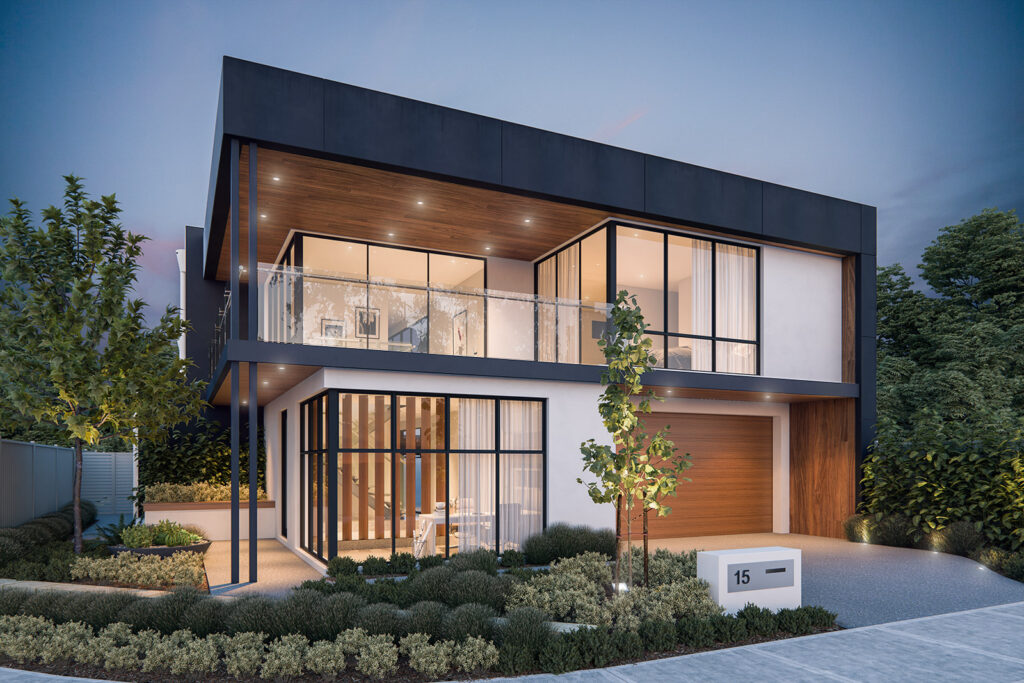What is 3D Rendering and Why Use It?The Architecture Designs

Are you curious about 3D rendering and what it can do for you? It is a powerful tool that can be used to create stunning visuals for a variety of projects, from movies and video games to architectural designs and product simulations. In this blog, we’ll explore what it is, its benefits, different types, tips for successful rendering, and why you should hire experts for doing it.
What is 3D Rendering?
source: pinterest.com
At its core, 3D rendering is the process of creating a digital image from a 3D model. This process typically involves taking 3D models that have been created in a 3D modeling program, such as 3Ds Max or Maya, and applying textures, lighting, and other effects to create a photorealistic image. This technique can be used for a wide range of projects, including product simulations, architectural designs, video game characters, and even animated movies.
Put simply, it is a way to create realistic images without having to use real-world objects. This can be useful for a variety of applications, such as product design, architecture, and video game development. The process of rendering is also much faster than traditional methods, such as photography and hand-drawn images, as it can be completed quickly with the help of powerful software.
Another thing is that it also has the potential to create more immersive experiences, as the visuals can be more realistic and lifelike than traditional methods. Furthermore, it can also be used to create visuals for virtual reality, augmented reality, and other interactive applications.
Benefits of 3D Rendering
source: pinterest.com
Using 3D rendering has a number of benefits that can make your projects more successful. The first benefit is that it can be used to create realistic visuals quickly. As mentioned above, things can be completed much faster than traditional methods, as the process is automated and can be done quickly with the help of powerful software.
Another benefit is that it can be used to create visuals for a variety of applications. From product design to architectural designs, creators are able to create stunning visuals for almost any project.
Additionally, experts use it for virtual reality, augmented reality, and other interactive applications. This can be useful for creating more immersive experiences, as the visuals can be more lifelike and realistic than traditional methods.
Finally, 3D rendering excels at creating visuals that are more cost-effective than traditional methods. Rendering is faster and more efficient, meaning that projects can be completed in a shorter amount of time and with less resources.
Different Types of 3D Rendering
source: pinterest.com
There are a number of different types of 3D rendering that can be used for different applications. The most common type is known as ray tracing, which is used to create photorealistic images. Ray tracing involves using light rays to simulate the way light interacts with objects, creating realistic shadows and reflections.
Another type of is known as radiosity, which is used to create more realistic lighting and shadows. Radiosity is a more complex form of rendering, as it involves simulating the way light interacts with surfaces, creating more realistic lighting and shadows.
Another type of rendering is known as global illumination, which is used to create more realistic lighting and shadows. Global illumination is a more complex form of rendering, as it involves simulating the way light interacts with surfaces, creating more realistic lighting and shadows.
Finally, there is also a type of 3D rendering known as path tracing, which is used to create more realistic lighting and shadows. Path tracing is a more complex form of rendering, as it involves simulating the way light interacts with surfaces, creating more realistic lighting and shadows.
Why Hire 3D Rendering Experts
source: pinterest.com
Hiring 3D rendering experts can be beneficial for a variety of projects, as they can provide expert advice and help create stunning visuals for real estate renderings. For example, Plus Render is known for its team of experts that can help with a variety of tasks, such as setting up the render engine, optimizing render settings, and creating realistic materials.
Not only can experts provide good advice and help create stunning visuals, but they can also help save time and money. Advanced users can help optimize render settings to ensure that projects are completed quickly and efficiently, helping to save time and money in the long run.
Furthermore, 3D rendering experts can also help create visuals for a variety of applications. From product design to architectural designs and can help create visuals for almost any project.
Finally, they can also help create visuals for virtual reality, augmented reality, and other interactive applications. This can be useful for creating more immersive experiences, as the visuals can be more lifelike and realistic than traditional methods.
Conclusion
source: pinterest.com
In conclusion, 3D rendering is a powerful tool that can be used to create stunning visuals for a variety of projects. It has a number of benefits, such as being faster than traditional methods and creating visuals for virtual reality and augmented reality. There are also a number of different types, such as ray tracing, radiosity, and global illumination. In addition, there are a few tips that can help you create more successful projects, such as using high-quality textures, realistic lighting, and the correct materials. Finally, it can be beneficial to hire experts, as they can provide expert advice and help create stunning visuals for a variety of projects. So, if you’re looking to create stunning visuals for your projects, consider hiring a good professional to help you get the job done.
The post What is 3D Rendering and Why Use It? appeared first on The Architecture Designs.





